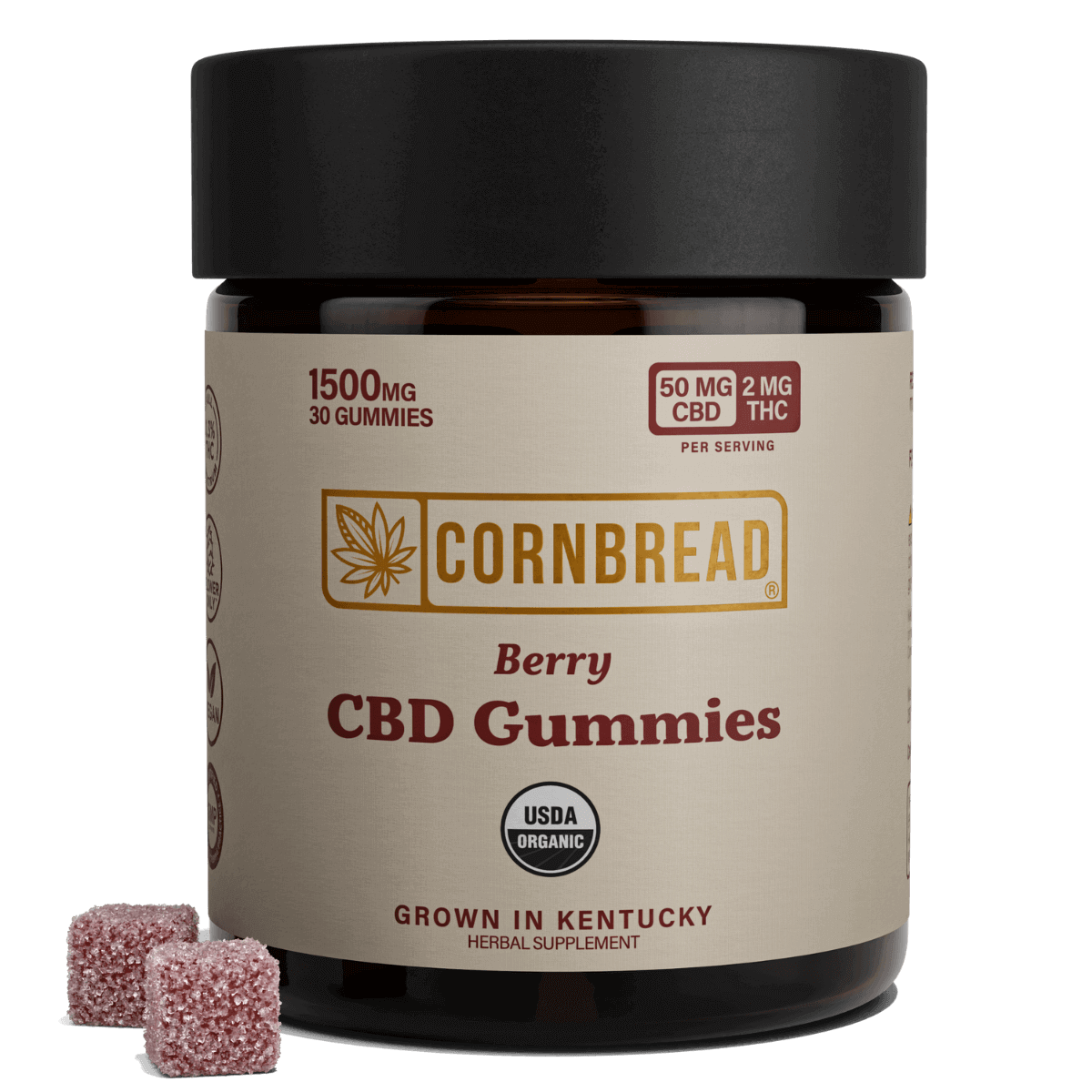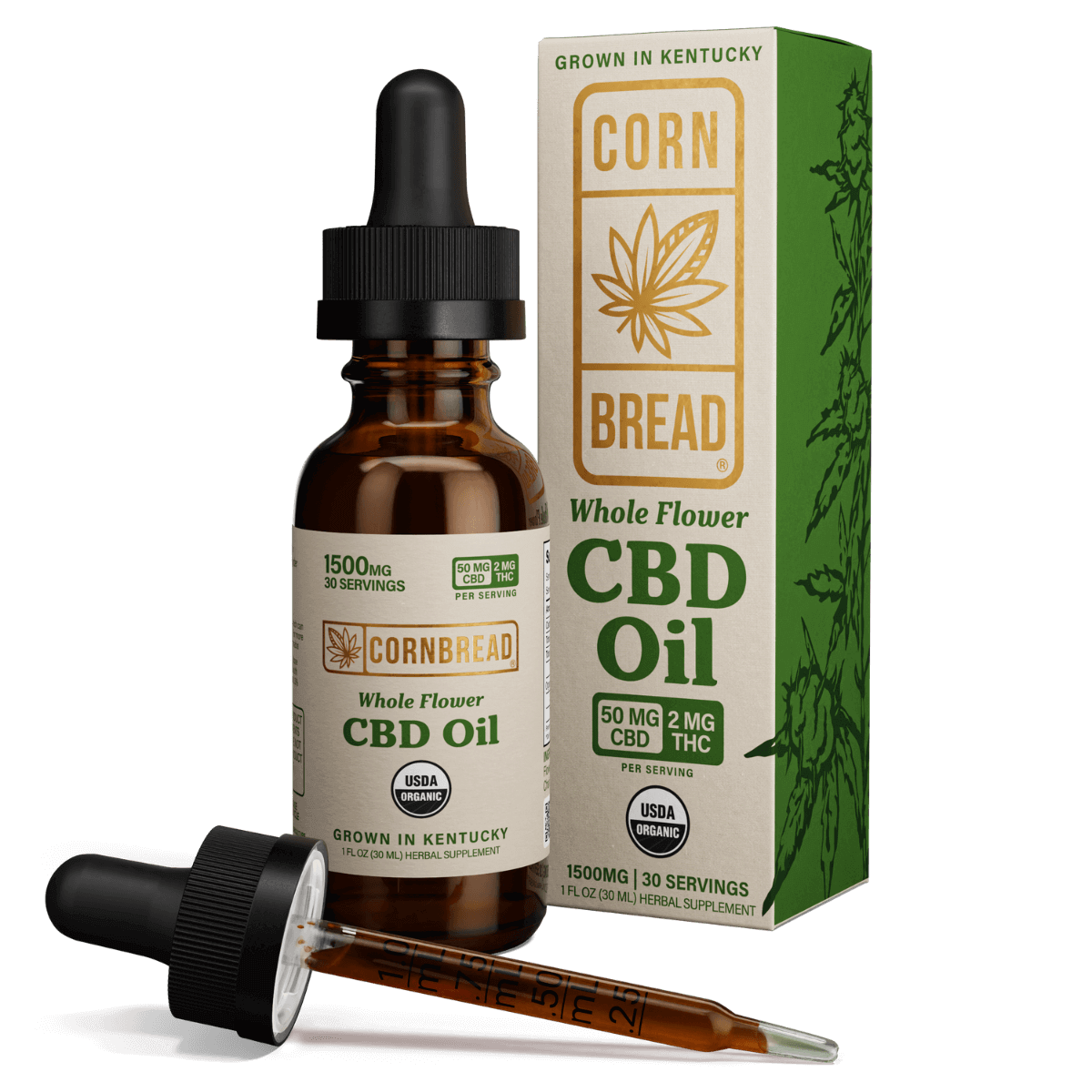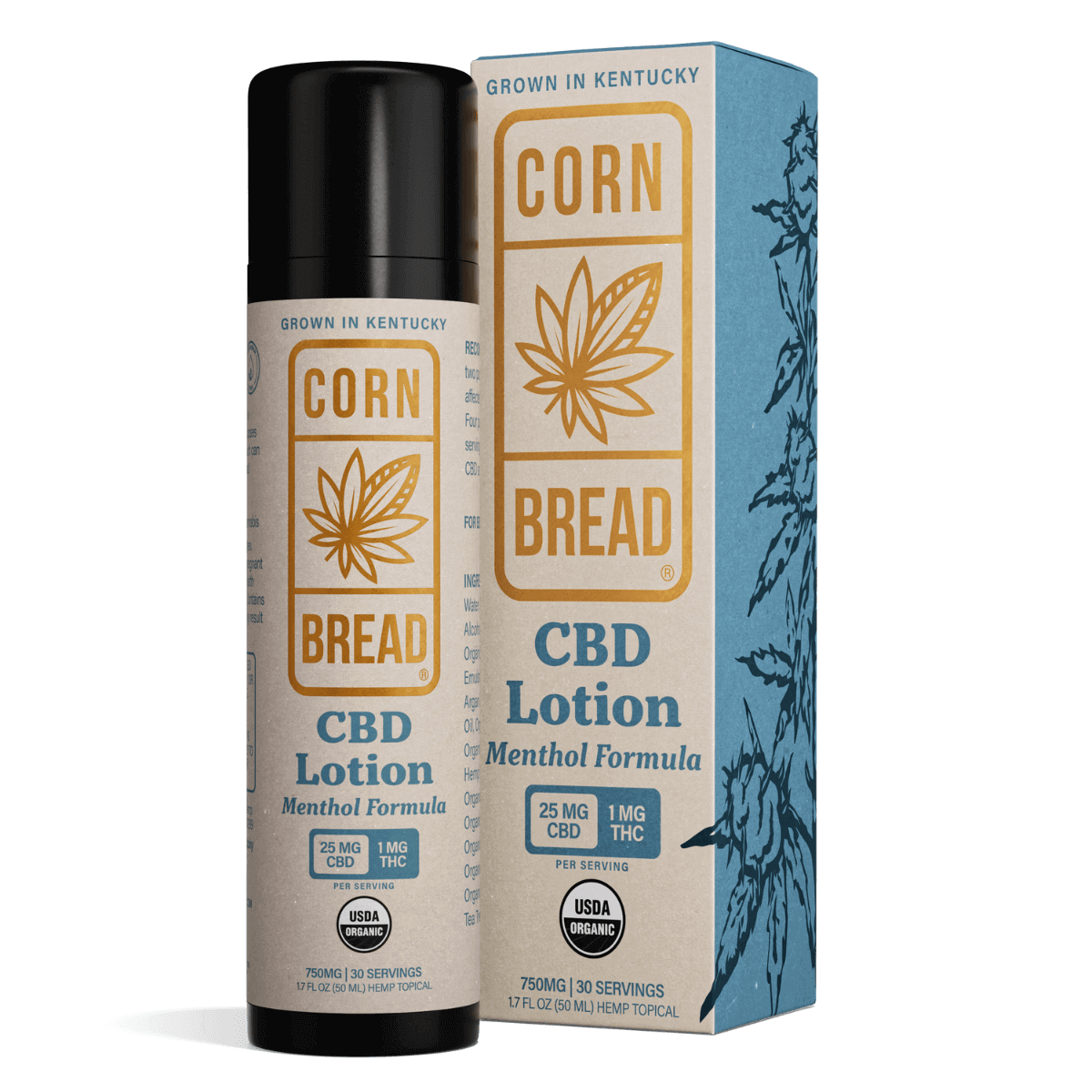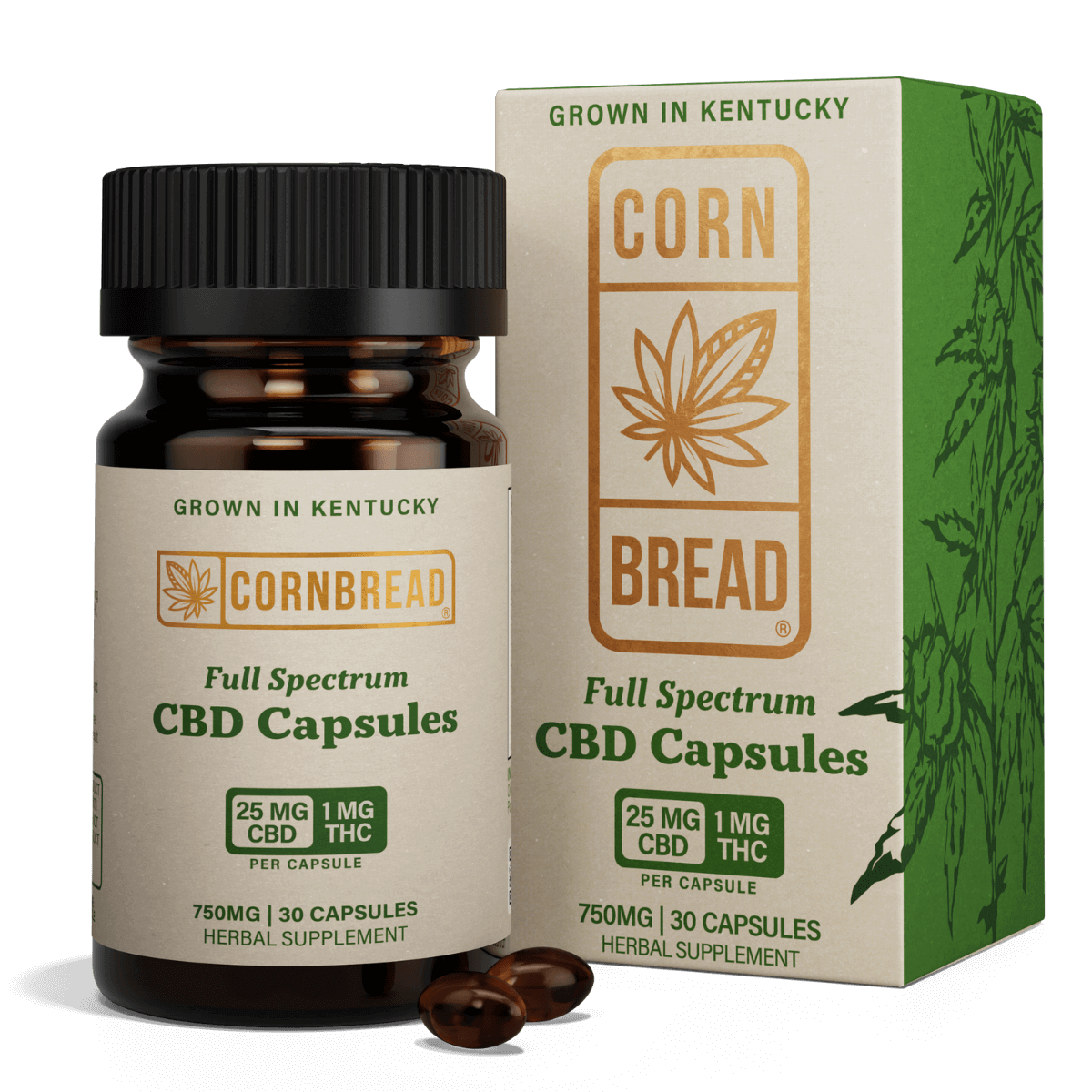Table of Contents
- Introduction
- What is the endocannabinoid system?
- What is CBD?
- The Endocannabinoid System and CBD
- Maintaining a Healthy Endocannabinoid System
- How to Find High-Quality CBD
- The Cornbread Hemp Difference
Introduction
Updated: August 15, 2023
While cannabis has been used medicinally for centuries, it wasn't until the 1988 discovery of the endocannabinoid system (ECS) — a complex signaling network that exists in the human body to promote homeostasis (overall balance) — that we began to understand why cannabis creates the effects it does.1 In this article, we'll explore the fascinating world of the endocannabinoid system and CBD, and how the two work together to promote health and well-being.
What is the endocannabinoid system?
The primary goal of the ECS is to act as a regulator, maintaining balance within the body's many systems. An expansive network of receptors and signaling chemicals within the bodies of all vertebrate species, including humans, it comprises three main parts:
- Endocannabinoids (from "endo" meaning "within"): Cannabinoid-like compounds that our bodies create
- Enzymes: Metabolic proteins which create endocannabinoids and later break them down
- Receptors: Special cells that interact with endocannabinoids and phytocannabinoids to trigger responses throughout the body
How does it work? The main cannabinoid receptors — known as CB1 and CB2 — are located all throughout the body. When endocannabinoids are released, they bind to these receptors, triggering responses that influence functions such as pain perception, mood, appetite, immune response, and sleep.
What is CBD?
When produced within the body, cannabinoid compounds are known as endocannabinoids — named after cannabinoids, which were discovered before the ECS. When found in plants such as the cannabis plant, they're known as phytocannabinoids.
Cannabidiol (CBD) is one of over 120 phytocannabinoids found in the cannabis plant. One of the most prevalent cannabinoids in cannabis, it's considered one of the two "major cannabinoids" — the other being THC (tetrahydrocannabinol), known for producing a "high" feeling.
Researchers have observed a variety of potential therapeutic benefits — without producing the high that THC does — making this phytocannabinoid the most popular one on the market. According to studies, some of the health issues CBD may help alleviate include the following:
- Aches and Pains: CBD may relieve aches and pains, such as from exercise-induced inflammation, by influencing pain perception and reducing inflammation.2
- Mood: CBD may offer potential mood-boosting benefits.3
- Sleep Issues: According to studies, CBD appears to increase overall sleep time and affect sleep latency (how long it takes to fall asleep).4
The Endocannabinoid System and CBD
There are several ways CBD affects the endocannabinoid system to bring about potential benefits. Here are a few examples:
- CBD may inhibit ECS enzymes, reducing the breakdown of endocannabinoids.5 This could potentially result in increased cannabinoid levels and prolonged stimulation of receptors in the ECS.
- CBD doesn't exactly block cannabinoid receptors but it may attach to certain sites on ECS receptors altering their shape and function.6 This could potentially affect the way other cannabinoids interact with the receptors and could influence ECS signaling overall. This may explain how CBD can reduce the intoxicating effects of THC.
- CBD is believed to interact with other receptors outside of the ECS.7 The interaction between CBD and other non-cannabinoid receptors, including those for serotonin and temperature, could allow CBD to have a wide-ranging influence on aches and pains, mood, and other functions.
- CBD has been shown to increase levels of BDNF8 (a vital protein that helps protect healthy brain cells, repair damaged cells, and form new connections).9 This may explain, in part, why CBD seems to have the potential to reduce everyday stress.
As phytocannabinoids go, CBD is especially interesting because of these unique reactions it seems to produce within the ECS. If the ECS is a master regulator of the body's system, then it could be said that CBD is a regulator of the ECS.
Maintaining a Healthy Endocannabinoid System
Dr. Ethan Russo hypothesized that an "endocannabinoid deficiency" could be the root cause of various maladies. In his 2004 study, he suggested that certain digestion, mood, and sleep issues could all be brought on by ECS dysfunction.10 While still just a theory, there is evidence to support it.
This concept could help explain why cannabinoids like CBD seem to make such a difference in supporting general wellness. Whether by increasing the body's natural supply of cannabinoids or stimulating its ECS receptors, high-quality cannabinoid supplements such as CBD appear to be highly beneficial in many cases.11
In addition to supplementing with CBD, you may be able to increase cannabinoid production within your ECS by doing the following:
- Exercising regularly (30 minutes of moderate exercise like running, swimming, biking, etc.)12
- Eating a healthy diet (think colorful fruits and veggies)13
- Taking cold showers (at least some of the time)14

How to Find High-Quality CBD
Given its popularity, CBD products are seemingly ubiquitous these days — but they're far from equal. This can be attributed to the fact that the FDA has yet to establish clear and specific regulations for CBD products intended for human consumption, such as dietary supplements and foods. In such a landscape, it's no surprise that abuses are rampant among manufacturers.
This makes it essential for consumers to be cautious and informed when purchasing CBD products and to check for third-party lab testing and quality certifications to ensure they're getting a reputable and safe product.
Here are a few things to know before you start your search:
Types of CBD
There are different types of CBD and they don't all work the same:
- CBD isolate: A cannabis product that's been refined and processed to contain only CBD with no other cannabis compounds
- Broad spectrum CBD: A form of CBS containing various cannabinoids and compounds found in the hemp plant, except for THC
- Full spectrum CBD: A less refined cannabis extract containing all of the cannabis compounds, including the other phytocannabinoids, terpenes (aroma-producing compounds), and flavonoids (color-producing compounds)
While there are benefits associated with CBD isolate and broad spectrum CBD, they're more processed than full spectrum products, and CBD isolate won't bring about the "entourage effect."
What's the entourage effect, you ask? It's where the therapeutic benefits of a cannabinoid are heightened due to the presence of other cannabis compounds. In keeping with the concept of the "whole is greater than the sum of its parts," full spectrum CBD is considered the most effective type of CBD supplement because it encourages this synergistic interaction, increasing the benefit potential of each cannabinoid present.
Why Organic Matters
Hemp (the type of cannabis plant used in the production of CBD) is a "bio-accumulator." This means that toxins, contaminants, pesticides, and heavy metals present in the soil get absorbed by hemp faster than the plant can expel them. Because of this, hemp is actually consider to be a useful tool in the remediation of contaminated soils.15
In the absence of federal regulation in the CBD industry, the only way to ensure the CBD you're consuming doesn't contain harmful toxins and heavy metals from the soil is to choose organic CBD, derived from organic hemp.
Why Extraction Matters
There's no current industry standard when it comes to extracting phytocannabinoids from the hemp plant. There are several methods of extraction and some are better than others.
- CO2 Supercritical Extraction: This is a popular method of extraction and results in CBD that is safe to consume. However, CBD oils made using this method tend to be harsh when consumed orally and they have a bitter aftertaste.
- Harsh Solvents: Some companies use solvents like butane to extract CBD from hemp. This solvent is more commonly used for lighter fluid and produces a lower quality product.
- Organic Sugarcane Ethanol: Ethanol solvents produce a superior, exceedingly clean CBD extract. This process is more gentle than the CO2 extraction method and safer than using butane, plus it doesn't produce a bitter aftertaste.
Any reputable CBD company will utilize third party lab testing to verify the quality of its products and make the results of those tests available to the public, so be sure to look for these.
The Cornbread Hemp Difference
Research continues into the endocannabinoid system and its relationship with CBD. While there's still much to learn, it's apparent that the ECS plays a vital role in our overall health and well-being and that CBD plays an important role in the ECS. Finding high-quality CBD involves understanding the different types of CBD, choosing organic options, and selecting products extracted with care.
At Cornbread Hemp, we understand the importance of cannabinoid quality when it comes to promoting optimal ECS function. This is why we offer the highest-quality CBD products — made from the flower only, containing the full spectrum of cannabis compounds including 2 mg of THC, and USDA-certified organic through every step of the process. Shop our CBD collection now.









